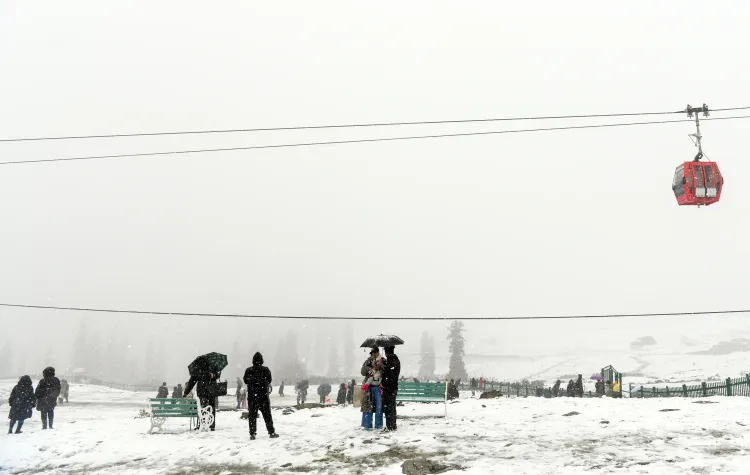What Led to the Closure of Major Highways in J&K?

Synopsis
Key Takeaways
- Major highways in J&K closed due to snowfall and landslides.
- Temperature drops significantly in various regions.
- Cold wave prompting locals to wear warmer clothing.
- Weather expected to improve after light snowfall.
- Farmers encouraged to resume agricultural activities.
Srinagar, Oct 7 (NationPress) Due to heavy snowfall and landslides caused by adverse weather conditions, all primary highways, such as Srinagar-Jammu, Srinagar-Leh, and the Mughal Road, were shut down for traffic on Tuesday.
Officials from the Traffic Department reported that snowfall at Zojila Pass and Pir Ki Gali resulted in the closure of the Srinagar-Leh highway and the Mughal Road. Additionally, landslides and falling stones in the Ramban area of the Srinagar-Jammu national highway also necessitated the road's closure.
Other routes, including Sinthan Pass, which connects the Valley to Kishtwar in the Jammu region, Razdan Pass, linking the Valley with the Gurez border area, and the road from Kupwara district to Tangdhar and Keran, have also been blocked.
The weather office has predicted light to moderate snowfall in the higher altitudes of Jammu and Kashmir until the afternoon, with a subsequent improvement in overall weather conditions.
The minimum temperature recorded was 7.1 degrees Celsius in Srinagar, while it fell to minus 0.4 degrees in Gulmarg and 0.6 degrees in Pahalgam.
In Jammu city, the minimum temperature was 15 degrees Celsius, with Katra at 12 degrees Celsius, Batote at 6.8 degrees Celsius, Banihal at 5.3 degrees Celsius, and Bhaderwah at 5.7 degrees Celsius.
A cold wind sweeping down from the snow-covered mountains has led to a cold wave affecting the Valley. Locals have begun donning wool clothing in urban areas, while residents in villages and foothill regions have started wearing a traditional tweed overgarment known as the 'Pheran'.
This early autumn snowfall signals the arrival of winter in the Kashmir Valley, as residents gather the paddy harvest after reaping, thrashing, and milling.
The weather bureau anticipates predominantly dry weather in Jammu and Kashmir starting tomorrow, lasting for the next week, although light showers may occur in certain areas during this time.
Farmers are encouraged to resume their agricultural activities starting tomorrow.









